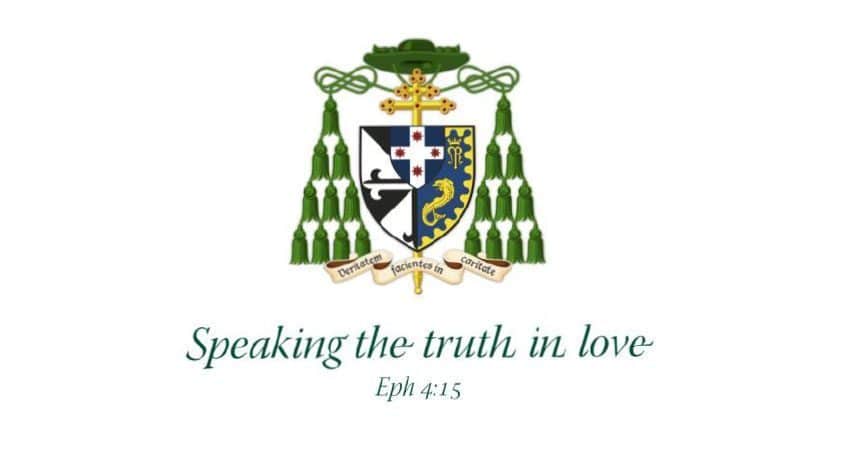Homily for Mass of the 3rd Sunday of Lent, Year B

St Mary’s Cathedral, Sydney, 3 March 2024
It was thought to be a rather ordinary Baroque painting, by an unknown disciple of Guido Reni, so its reserve price at a Paris auction house was €6,000. But the baroque depiction of Moses sold just over a year ago for a staggering €600,000.[1] Art dealer Fabrizio Moretti was so convinced of its worth, he outbid all the competition.[2] He had the painting restored, uncovering a striking luminesce beneath the ageing varnish and centuries of filth, and confirmed that it was by the Baroque master Giovanni Barbieri, known as “Guercino”—the squinter—because of a lazy eye that clearly didn’t compromise his ability to paint. Probably commissioned around 1618 by Cardinal Alessandro D’Este, it joined the renowned Ducal collection in Modena, until the Napoleonic forces stole it away to France where it vanished. Although its whereabouts for the last two hundred years are a mystery, its future now seems secure: it was reported this past month that the Rothschild Foundation has purchased it for €2 million for exhibition at Waddesdon Manor in England.[3]
Guercino’s Moses is unique. Most artistic representations have him holding the tablets of the Ten Commandments, in a painted representation of our first reading (Ex 20:1-17). But Guercino’s Moses is empty-handed, with traditional horns of light, his eyes fixed on heaven as if in a trance. Guercino captures something of the awe of Moses when God spoke to him directly. One hand shields his eyes from the divine light, but open palms signify his readiness to receive the commandments. His serene and focused face reflects the seriousness of the task.
But Moses had to come back to earth. Descending the mountain, he found the people worshipping a golden calf, turning their back on the God who had just delivered them from bondage in Egypt. In a fit of peak, he smashes the tablets and penances the people (Ex 32:20-33:6). It wasn’t the first or last time Moses lost his cool. He often quarrelled with God, Pharaoh or the People. As a youth he’d even killed an Egyptian guard after witnessing him beating a Hebrew slave. Put simply: Moses had anger issues.[4]
If serene and focussed Moses could have unsettling episodes of temper, what are we to make of Jesus’ actions in our Gospel today (Jn 2:13-25)? Surely the Son of the infinitely patient God would be immune to fits of rage? A few deep breaths and some mindfulness exercises and He could have composed Himself…
In Guercino’s later depiction of Christ Driving the Money-changers from the Temple (1634), now in the Palazzo Rosso in Genoa, the anger is palpable as Jesus, like a jealous lover, rains down blows on those defiling the Temple. It’s not the “gentle Jesus meek and mild” who strokes and consoles us. This is the Jesus who thirsts for justice, inveighs against hypocrites, divides people, and promises a sword of judgment. This is the Jesus who engaged in a life and death struggle with Satan and his forces, with sin and disease, infidelity and death. So grave is His indignation that St John feels he must excuse it, citing the Psalms: “Zeal for your house devours me.” (Ps 69:9)
Why was Jesus so worked up about a building and what went on in there? Well, we know He spent a great deal of time in the Temple, from his Presentation as a baby, and Lost and Found ‘Bar Mitzvah’ as an adolescent, to the examples of His teaching, debating, and healing in the Temple precinct as an adult.[5] When Jesus drove out the moneychangers, He was not taking a stance on rising interest rates and the cost-of-living crisis, not making a statement against banking or capitalism. Rather, He was emphasising that this place is not for that use. This is a consecrated space, set aside for a sacred use, “my father’s house, not a place of business.”
Understandably, the religious authorities took umbrage. (If one of you runs amuck in the cathedral this morning, I’ll be calling security myself!) They demand proof of Jesus’ claim to represent God. He offers Lent and Easter as His answer: “Destroy this sanctuary and in three days I will raise it up.” It’s a mysterious response and John again feels he must explain: “Jesus was speaking about the sanctuary of his body, and it was only when he rose from the dead that we understood.”
Yet Jesus’ death and resurrection doesn’t really explain His behaviour this morning: it’s the other way around: what’s happening in the Temple explains Jesus’ death and resurrection. More than any other, this was the event that provoked the authorities’ determination to get rid of Him. He talks ambiguously, almost interchangeably, about the Temple and His body: the destiny of the one hangs on the other. From now on, the privileged place for God and people to meet will not be in the Temple in Jerusalem but in the Risen Christ and His body the Church (Rom 12:5; 1Cor 12:12–27; Eph 3:6; 5:23; Col 1:18,24). He is the new sanctuary, replacing the old one He loved so well. On Good Friday, the veil of that Temple will be rent asunder (Lk 23:45) and on Easter Day the new Temple will rise from the abandoned cloths.
So, in entering the Church, Christ’s ecclesial body, we meet God. When we commune in the Body of Christ at the Eucharist, we are closer to God than any High Priest ever was when he entered the Holy of Holies in Jerusalem. Christ makes us temples too: each one a tabernacle, a chapel, consecrated by Baptism, set aside for a sacred purpose. Within the walls of our own bodies, God the Son is really present at Holy Communion. Within the form of our own souls, God the Holy Spirit dwells (Rom 8:9; 1Cor 3:16; 6:19; Eph 2:22). We are spaces for divine grace and activity, meeting places of humankind and God, and not just for ourselves but for others.
Christ returns every Lent to cleanse the temple of our hearts. To chase out the sin and sloth. To overturn the tables of half-heartedness and misdirection. To entrust again the Ten Commandments to hands open like Guercino’s Moses. And to absolve us for the times we’ve failed to abide by them. Let Him sweep out the house of your soul, then, like the Jews sweep out their homes for Passover. Let Him cleanse you through prayer, penance, charity, above all by sacramental absolution after confessing your sins. Let Him spruce up your soul and ready you to be His temple at Easter.
[1] The painting sold for more than $600,000 at auction on 25 November 2022 at Chayette and Cheval in Paris: Angela Davic, “Moses painting estimated at $6,000 sold for more than $600,000,” The Collector 30 November 2022; V.M. Traverso, “Moses painting by Baroque master Guercino rediscovered,” Aleteia 18 February 2024.
[2] “Guiercino’s Moses, a Baroque masterpiece belonging to Alessandro D’Este,” https://morettigallery.com/exhibitions/59/overview/
[3] Ian McTaggart, “Lost Guercino masterpiece to go on display in Britain 200 years after it vanished,” The Telegraph 21 February 2024; Martin Bailey, “Rothschild foundation acquires lost Guercino masterpiece,” The Art Newspaper 31 January 2024.
[4] Moses quarrelled with God: e.g. Ex 3:11,13; 4:1,10; 5:22; 6:12,30; 15:25; 17:4; 32:7-14. Moses quarrelled with Pharaoh in Ex chs 5, 7-11,14. Moses quarrelled with the People: e.g. Ex 14:11-14; 15:24; 16:2-3,8,20; 17:2-3,22,27-29 etc.. Moses killed an Egyptian guard: Ex 2:11-22.
[5] Jesus’ Presentation as a baby: Lk 2:27-38. Boy Jesus Lost and Found in the Temple: Lk 2:41-51. Jesus teaching, debating, healing and prophesying in the Temple precinct: Mt 12:5f; 17:24ff; 21:12ff; 21:23-24:1; 26:55,61; Mk 11:11,15ff,27ff; 12:35-13:3; 14:49; 15:38; Lk 4:9; 18:10; 19:45ff; 20:1ff; 21:37; 21:38; 22:53; Jn 2:13-25; 5:14; 7:14, 28; 8:2,59; 10:23; 11:56; 18:20.
Introduction to Mass of the 3rd Sunday of Lent, Year B – St Mary’s Cathedral, Sydney, 3 March 2024
Welcome to St Mary’s Cathedral in Sydney for the Solemn Mass on the Third Sunday of Lent. We continue our journey with Christ to Jerusalem, and to His cross and tomb, by fasting humbly, praying earnestly, and giving generously. To prepare ourselves to celebrate the sacred mysteries, let us confess our sins…

